 W
WThe Battle of Almansa was a campaign fought as part of the War of the Spanish Succession. It took place on 25 April 1707 between the forces of Philip V of Spain, Bourbon, claimant to the Spanish throne, and his Habsburg rival, Archduke Charles of Austria. The result was a decisive Bourbon victory that reclaimed most of eastern Spain for Philip.
 W
WThe Battle of Almenar also referred to as Almenara was a battle in the Iberian theatre of the War of the Spanish Succession.
 W
WThe Apalachee massacre was a series of raids by English colonists from the Province of Carolina and their Indian allies against a largely peaceful population of Apalachee Indians in northern Spanish Florida that took place in 1704, during Queen Anne's War. Against limited Spanish and Indian resistance, a network of missions was destroyed; most of the population either was killed or captured, fled to larger Spanish and French outposts, or voluntarily joined the English.
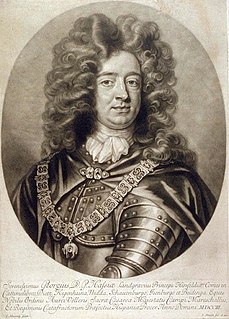 W
WThe Landing at Barcelona was a failed Allied attempt in May 1704 during the War of the Spanish Succession to capture the city of Barcelona from its Spanish pro-Bourbon defenders.
 W
WThe Siege of Barcelona took place between 14 September and 19 October 1705 during the War of the Spanish Succession when a multinational Grand Alliance army led by Lord Peterborough, supporting the Habsburg pretender to the Spanish throne, captured the city of Barcelona from its Spanish Bourbonic defenders, most of whom then joined the Habsburg army.
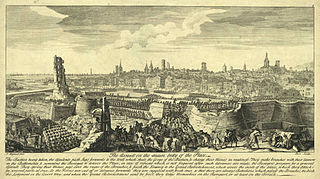 W
WThe Siege of Barcelona was a battle at the end of the War of Spanish Succession, which pitted Archduke Charles of Austria against Philip V of Spain, backed by France in a contest for the Spanish crown.
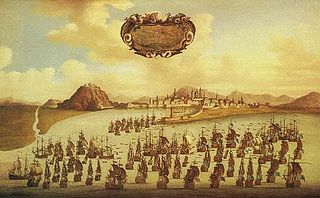 W
WThe Siege of Barcelona took place between 3 and 27 April 1706 during the War of the Spanish Succession when a Franco-Spanish army laid siege to Barcelona in an attempt to recapture the city following its fall to an English-led Allied army the previous year.
 W
WThe Battle of Almansa reenactment is an annual modern recreation of the battle of Almansa of 1707. This took place in Almansa, Spain, during the War of the Spanish Succession. The event is organized by the Asociación 1707 Almansa Historica. The 2019 event will take place April 26th - April 28th 2019.
 W
WThe Battle of Blenheim, fought on 13 August [O.S. 2 August] 1704, was a major battle of the War of the Spanish Succession. The overwhelming Allied victory ensured the safety of Vienna from the Franco-Bavarian army, thus preventing the collapse of the reconstituted Grand Alliance.
 W
WThe Battle of Bloody Creek was fought on 10/21 June 1711 during Queen Anne's War. An Abenaki militia successfully ambushed British and New England soldiers at a place that became known as Bloody Creek after the battles fought there. The creek empties into the Annapolis River at present day Carleton Corner, Nova Scotia, and was also the location of a battle in 1757.
 W
WThe Siege of Bonn took place in 1703 during the War of the Spanish Succession when an Allied force laid siege to and forced the surrender of the French garrison of the city of Bonn. The Allied forces were part of a general field army commanded by John Churchill, 1st Duke of Marlborough. The siege was portrayed in a contemporaneous painting by Alexander van Gaelen.
 W
WThe Siege of Bouchain, was a siege of the War of the Spanish Succession, and a victory for the French troops of the Duc de Villars. A French army of 20,000 men besieged and captured the Allied-controlled fortifications after an 18-day siege, with the 2,000-strong Dutch-Imperial garrison under Major-General Grovenstein capitulating on 19 October.
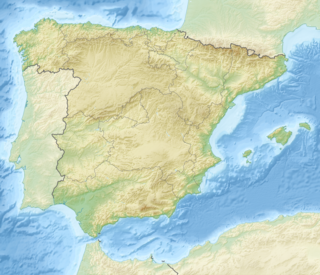 W
WThe Battle of Brihuega took place on 8 December 1710 in the War of the Spanish Succession, during the allied retreat from Madrid to Barcelona. The British rearguard under Lord Stanhope was cut off within the town of Brihuega and overwhelmed by a Franco-Spanish army under the duc de Vendôme. Brihuega with other events brought an end to the British participation in the war.
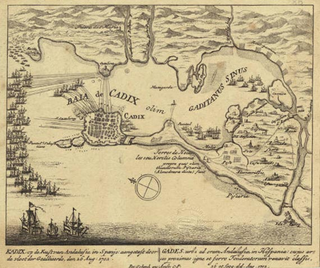 W
WThe Battle of Cádiz, fought in August/September 1702, was an Anglo-Dutch attempt to seize the southern Spanish port of Cádiz during the War of the Spanish Succession. The Andalusian city of Cádiz was the great European centre of the Spanish–American trade. The port's capture would not only help to sever Spain's links with her empire in the Americas, but it would also provide the Allies with a strategically important base from which the Anglo-Dutch fleets could control the western Mediterranean Sea.
 W
WThe Battle of Calcinato took place near the town of Calcinato in Lombardy, Italy on 19 April 1706 during the War of the Spanish Succession between a French-led force under the duc de Vendôme and an Imperial army under Graf von Reventlow. It resulted in a French victory.
 W
WThe Capture of Menorca saw the island of Menorca captured from Spain by British-Dutch forces acting on behalf of Charles VI, Holy Roman Emperor the Austrian claimant to the Spanish throne in September 1708 during the War of the Spanish Succession. The British would later annex the island as their own possession at the Treaty of Utrecht (1713).
 W
WThe Battle of Carpi was a series of manoeuvres in the summer of 1701, and the first battle of the War of the Spanish Succession that took place on 9 July 1701 between France and Austria. It was a minor skirmish that the French commander decided was not worth fighting, but his soldiers were displeased at his decision to retreat, and he was subsequently replaced.
 W
WThe Battle of Cassano took place on 16 August 1705, during the War of the Spanish Succession. It was fought at the town of Cassano d'Adda, in Lombardy, Italy, between a French army commanded by the duc de Vendôme and an Imperial army under Prince Eugene of Savoy.
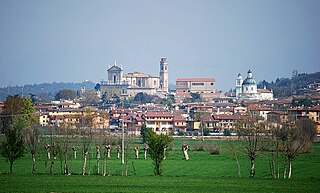 W
WThe Battle of Castiglione took place near Castiglione delle Stiviere in Lombardy, Italy on 8 September 1706 during the War of the Spanish Succession. A French army of 12,000 attacked a Hessian corps of 10,000 that was besieging the town, forcing them to retreat with heavy losses.
 W
WCesana Torinese is a comune (municipality) in the Metropolitan City of Turin in the Italian region Piedmont, located about 70 kilometres (43 mi) west of Turin, on the border with France.
 W
WLefebvre's Charles Town expedition was a combined French and Spanish attempt under Captain Jacques Lefebvre to capture the capital of the English Province of Carolina, Charles Town, during Queen Anne's War.
 W
WThe Battle of Chiari was fought on 1 September 1701 during the War of the Spanish Succession. The engagement was part of Prince Eugene of Savoy's campaign to seize the Spanish controlled Duchy of Milan in the Italian peninsula, and had followed his victory over Marshal Catinat at the Battle of Carpi in July. Marshal Villeroi replaced Catinat as commander of the Franco–Spanish–Savoyard forces in the theatre, carrying with him orders from King Louis XIV to push the Imperialists out of Italy.
 W
WFor the battle between Romans and Gauls, see Battle of Cremona. For the battle during the Year of the Four Emperors, see Battle of Bedriacum.
 W
WThe 1704 Raid on Deerfield occurred during Queen Anne's War on February 29 when French and Native American forces under the command of Jean-Baptiste Hertel de Rouville attacked the English frontier settlement at Deerfield, Massachusetts, just before dawn. They burned part of the town and killed 47 villagers. The raiders left with 112 settlers as captives, whom they took overland the nearly 300 miles to Montreal. Some died or were murdered along the way, and 60 were later ransomed by family and community. Others were adopted by Mohawk families and became assimilated into the tribe. In this period, the English and their Indian allies were involved in similar raids against French villages along the northern area between the spheres of influence.
 W
WThe Battle of Denain was fought on 24 July 1712 as part of the War of the Spanish Succession. It resulted in a French victory, under Marshal Villars, against Dutch and Austrian forces, under Prince Eugene of Savoy.
 W
WThe Battle of Ekeren, which took place on 30 June 1703, was a battle of the War of the Spanish Succession. The French surrounded the much smaller Dutch force, which however managed to beat it back, break out and retire to safety. The battle had no strategic effect whatsoever.
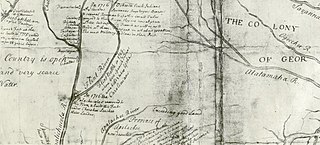 W
WThe Battle of Flint River was a failed attack by Spanish and Apalachee Indian forces against Creek Indians in October 1702 in what is now the state of Georgia. The battle was a major element in ongoing frontier hostilities between English traders from the Province of Carolina and Spanish Florida, and it was a prelude to more organized military actions of Queen Anne's War.
 W
WThe Battle of Fort Albany was an attack by French colonial volunteers and their native allies against the Canadian Hudson's Bay Company outpost of Fort Albany in the southern reaches of Hudson Bay. About 70 Frenchmen and 30 Indians attacked the fort, which was under the command of John Fullartine. Fullartine repulsed the attack, killing eighteen men including the leaders. He lost two men to ambush on their way back to the fort shortly after the attack.
 W
WThe Battle of Friedlingen was fought in 1702 between France and the Holy Roman Empire. The Imperial forces were led by Louis William, Margrave of Baden-Baden, while the French were led by Claude Louis Hector de Villars. The French were victorious.
 W
WThe Siege of Ghent was the last operation of the 1708 campaign season during the War of the Spanish Succession. After successfully taking Lille shortly before, the Duke of Marlborough moved his forces onto the town of Ghent where after a 12-day siege the town's governor, Count de la Motte, surrendered.
 W
WThe Capture of Gibraltar by Anglo-Dutch forces of the Grand Alliance occurred between 1 and 4 August 1704 during the War of the Spanish Succession. Since the beginning of the war the Alliance had been looking for a harbour in the Iberian Peninsula to control the Strait of Gibraltar and facilitate naval operations against the French fleet in the western Mediterranean Sea. An attempt to seize Cádiz had ended in failure in September 1702, but following the Alliance fleet's successful raid in Vigo Bay in October that year, the combined fleets of the 'Maritime Powers', the Netherlands and England, had emerged as the dominant naval force in the region. This strength helped persuade King Peter II of Portugal to sever his alliance with France and Bourbon-controlled Spain, and ally himself with the Grand Alliance in 1703 as the Alliance fleets could campaign in the Mediterranean using access to the port of Lisbon and conduct operations in support of the Austrian Habsburg candidate to the Spanish throne, the Archduke Charles, known to his supporters as Charles III of Spain.
 W
WThe Raid on Grand Pré was the major action of a raiding expedition conducted by New England militia Colonel Benjamin Church against French Acadia in June 1704, during Queen Anne's War. The expedition was allegedly in retaliation for a French and Indian raid against the Massachusetts frontier community of Deerfield earlier that year.
 W
WThe Siege of Haguenau was a siege of the War of the Spanish Succession. An Imperial army under the command of Field Marshal Johann Karl von Thüngen, besieged and captured the French fortified city of Haguenau on the banks of the Rhine river in Alsace.
 W
WThe Raid on Haverhill was a military engagement that took place on August 29, 1708 during Queen Anne's War. French, Algonquin, and Abenaki warriors under the command of Jean-Baptiste Hertel de Rouville descended on Haverhill, then a small frontier community in the Province of Massachusetts Bay. In the surprise attack, 16 people were killed and another 14 to 24 were taken captive. A rapid militia muster gave chase, and in a skirmish later in the day, nine of the French and Indian party were killed and some of their prisoners escaped.
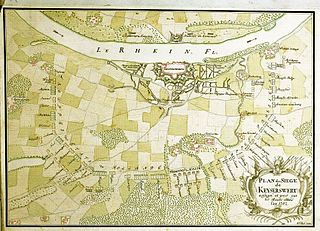 W
WThe Siege of Kaiserswerth, was a siege of the War of the Spanish Succession. Prussian and Dutch troops numbering 38,000 men and 215 artillery pieces and mortars under the command of Imperial Field Marshal Walrad, Prince of Nassau-Usingen, besieged and captured the small French fortress on the Lower Rhine, which the French had occupied without resistance the previous year. The Dutch regarded the capture of this fortification as more important than an advance into the French-held Spanish Netherlands.
 W
WThe Siege of Landau saw an army from the Holy Roman Empire led by Louis William, Margrave of Baden-Baden lay siege to the fortress city of Landau which was held for the Kingdom of France. The French defenders led by Ezéchiel du Mas, Comte de Mélac resisted vigorously but were forced to surrender after a three-month leaguer. This action of the War of the Spanish Succession occurred at Landau in the state of Rhineland-Palatinate, Germany, located 49 kilometres (30 mi) southwest of Mannheim.
 W
WThe Siege of Lille was the salient operation of the 1708 campaign season during the War of the Spanish Succession. After an obstinate defence of 120 days, the French garrison surrendered the city and citadel of Lille, commanded by Marshal Boufflers, to the forces of the Duke of Marlborough and Prince Eugene.
 W
WThe Battle of Luzzara took place in Lombardy on 15 August 1702 during the War of the Spanish Succession, between a combined French and Savoyard army under Louis Joseph, duc de Vendôme, and an Imperial force under Prince Eugene.
 W
WThe Battle of Santa Vittoria was an encounter battle or skirmish in the Italian region of Emilia-Romagna on 26 July 1702 during the War of the Spanish Succession between a French force under Louis Joseph, duc de Vendôme and an Imperial cavalry detachment under General Annibal Visconti.
 W
WThe Battle of Malplaquet was fought near the border of France on 11 September 1709 and was a major engagement of the War of the Spanish Succession. It pitted a French army, commanded by Marshal Duke of Villars and Marshal Duke of Boufflers, against an allied army, led by the Duke of Marlborough and Prince Eugene of Savoy. After a string of defeats, failure of the harvest and the prospect of invasion, Louis XIV of France had appealed to French patriotism, recruited fresh soldiers and instructed Villars to use the country's last army to give battle against Marlborough's formidable force. After a series of manoeuvres, Villars settled on a position in which both of his flanks were anchored in woods. Even though the French were outnumbered, Marlborough's familiar tactics of flank attacks to draw off troops from the centre incurred serious attrition by massed French musketry and skillful use of artillery.
 W
WThe Battle of Oudenarde, also known as the Battle of Oudenaarde, was a major engagement of the War of the Spanish Succession, pitting a Grand Alliance force consisting of eighty thousand men under the command of the Duke of Marlborough and Prince Eugene of Savoy against a French force of eighty-five thousand men under the command of the Duc de Bourgogne and the Duc de Vendôme, the battle resulting in a great victory for the Grand Alliance. The battle was fought near the city of Oudenaarde, at the time part of the Spanish Netherlands, on 11 July 1708. With this victory, the Grand Alliance ensured the fall of various French territories, giving them a significant strategic and tactical advantage during this stage of the war. The battle was fought in the later years of the war, a conflict that had come about as a result of English, Dutch and Hapsburg apprehension at the possibility of a Bourbon succeeding the deceased King of Spain, Charles II, and combining their two nations and empires into one.
 W
WThe Siege of Pensacola was two separate attempts in 1707 by English-supported Creek Indians to capture the town and fortress of Pensacola, one of two major settlements in Spanish Florida.
 W
WThe Planned French Invasion of Britain, 1708, also known as the 'Entreprise d’Écosse,' took place during the War of the Spanish Succession. The French planned to land 5,000-6,000 soldiers in North-East Scotland to support a rising by local Jacobites, that would restore James Francis Edward Stuart to the throne of Great Britain.
 W
WThe Siege of Port Royal in 1707 was two separate attempts by English colonists from New England to conquer Acadia by capturing its capital Port Royal during Queen Anne's War. Both attempts were made by colonial militia, and were led by men inexperienced in siege warfare. Led by Acadian Governor Daniel d'Auger de Subercase, the French troops at Port Royal easily withstood both attempts, assisted by irregular Acadians and the Wabanaki Confederacy outside the fort.
 W
WThe Siege of Port Royal, also known as the Conquest of Acadia, was a military siege conducted by British regular and provincial forces under the command of Francis Nicholson against a French Acadian garrison and the Wabanaki Confederacy under the command of Daniel d'Auger de Subercase, at the Acadian capital, Port Royal. The successful British siege marked the beginning of permanent British control over the peninsular portion of Acadia, which they renamed Nova Scotia, and it was the first time the British took and held a French colonial possession. After the French surrender, the British occupied the fort in the capital with all the pomp and ceremony of having captured one of the great fortresses of Europe, and renamed it Annapolis Royal.
 W
WThe Battle of Ramillies, fought on 23 May 1706, was a battle of the War of the Spanish Succession. For the Grand Alliance – Austria, England, and the Dutch Republic – the battle had followed an indecisive campaign against the Bourbon armies of King Louis XIV of France in 1705. Although the Allies had captured Barcelona that year, they had been forced to abandon their campaign on the Moselle, had stalled in the Spanish Netherlands and suffered defeat in northern Italy. Yet despite his opponents' setbacks Louis XIV wanted peace, but on reasonable terms. Because of this, as well as to maintain their momentum, the French and their allies took the offensive in 1706.
 W
WThe Rhine campaign (1713) was a successful French campaign against the Holy Roman Empire, which refused to sign the Treaty of Utrecht. The campaign led to the signing of the Treaty of Rastatt (1714).
 W
WThe Battle of St. John's was the French capture of St. John's, the capital of the British colony of Newfoundland, on 1 January 1709 [O.S. 21 December 1708], during Queen Anne's War. A mixed and motley force of 164 men led by Joseph de Monbeton de Brouillan de Saint-Ovide, king's lieutenant to Philippe Pastour de Costebelle, the French governor of Plaisance, quickly overwhelmed the British garrison at St. John's, and took about 500 prisoners.
 W
WThe Siege of St. John's was a failed attempt by French forces led by Daniel d'Auger de Subercase to take the fort at St. John's, Newfoundland during the winter months of 1705, in Queen Anne's War. Leading a mixed force of regulars, militia, and Indians, Subercase burned much of the town and laid an ineffectual siege against the fort for five weeks between late January and early March 1705. Subercase lifted the siege after running out of provisions and gunpowder.
 W
WThe Battle of Saragossa took place on 20 August 1710 between the Spanish-Bourbon army commanded by the Marquis de Bay and a multinational army led by the Austrian commander Guido Starhemberg during the War of the Spanish Succession.
 W
WThe Battle of Schellenberg, also known as the Battle of Donauwörth, was fought on 2 July 1704 during the War of the Spanish Succession. The engagement was part of the Duke of Marlborough's campaign to save the Habsburg capital of Vienna from a threatened advance by King Louis XIV's Franco-Bavarian forces ranged in southern Germany. Marlborough had commenced his 250-mile (400 km) march from Bedburg, near Cologne, on 19 May; within five weeks he had linked his forces with those of the Margrave of Baden, before continuing on to the river Danube. Once in southern Germany, the Allies' task was to induce Max Emanuel, the Elector of Bavaria, to abandon his allegiance to Louis XIV and rejoin the Grand Alliance; but to force the issue, the Allies first needed to secure a fortified bridgehead and magazine on the Danube, through which their supplies could cross to the south of the river into the heart of the Elector's lands. For this purpose, Marlborough selected the town of Donauwörth.
 W
WThe Siege of St. Augustine occurred in Queen Anne's War during November and December 1702. It was conducted by English provincial forces from the Province of Carolina and their native allies, under the command of Carolina's governor James Moore, against the Spanish colonial fortress of Castillo de San Marcos at St. Augustine, in Spanish Florida.
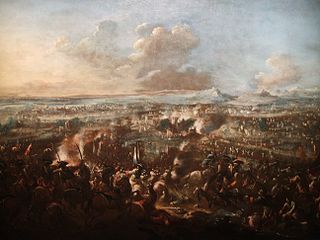 W
WThe Siege of Turin took place from June to September 1706, during the War of the Spanish Succession, when a French army led by Louis de la Feuillade besieged the Savoyard capital of Turin. The campaign by Prince Eugene of Savoy that led to its relief has been called the most brilliant of the war in Italy. The siege is also famous for the death of Piedmontese hero Pietro Micca.
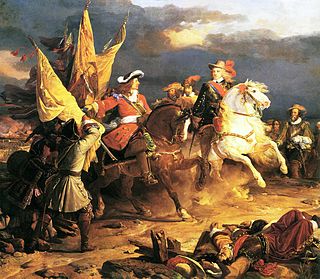 W
WThe Battle of Villaviciosa was a battle between a Franco-Spanish army led by Louis Joseph, Duke of Vendôme and Philip V of Spain and a Habsburg-allied army commanded by Austrian Guido Starhemberg. The battle took place during the War of the Spanish Succession, one day after a Franco-Spanish victory at Brihuega against the British army under James Stanhope. Both Philip V of Spain and the Archduke Charles of Austria claimed victory, but the number of dead and wounded, the number of artillery and other weapons abandoned by the Allied army and the battle's strategic consequences for the war confirmed victory for Philip.
 W
WThe Battle of Wijnendale was a battle in the War of the Spanish Succession fought on 28 September 1708 near Wijnendale, Flanders, between an allied force protecting a convoy for the Siege of Lille (1708) and forces of Bourbon France and Spain. It ended in a victory for the allies, leading to the taking of Lille.
 W
WThe Siege of Zoutleeuw or the Siege of Léau was a siege of the War of the Spanish Succession. Allied troops with 16 artillery pieces under the command of the English Captain general the Duke of Marlborough, besieged and captured the small French-held Flemish fortified town of Zoutleeuw in the Spanish Netherlands.